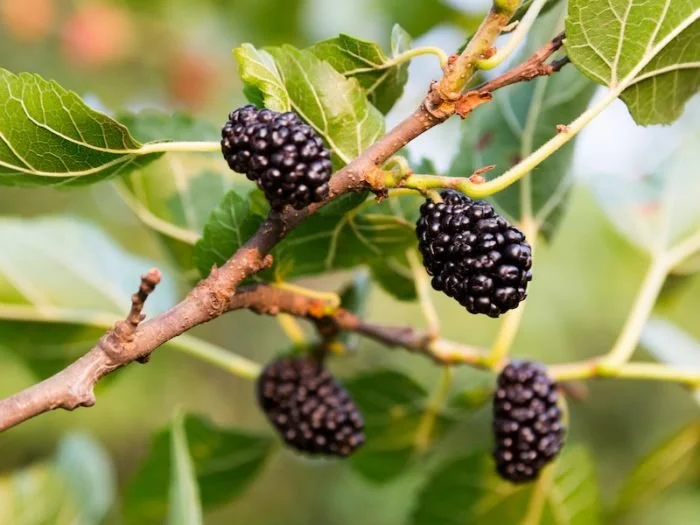Black Mulberry
The Black Mulberry Tree
Description
The Black Mulberry Tree is a long-lived medium sized tree known for its beautiful heart shaped bright green leaves. It is a deciduous tree growing to 12 metres (39 feet) tall by 15 m (49 ft) broad.
The flowers are insignificant and greenish, followed by fruits that are around 2cm in length, dark purplish-red and edible. The purple-black berries are large and juicy. Mulberry trees are self-fertile, and fruits abundantly through August and September. The tree is pruned in the winter when it is fully dormant.
Facts and Figures
The Black Mulberry Tree was planted to mark the Silver Jubilee of Queen Elizabeth II in 1977. It was imported into Britain in the 17th century in the hope that it would be useful in the cultivation of silkworms (Bombyx Mori). It was unsuccessful in that enterprise because silkworms prefer the white mulberry.
Black mulberries (Morus nigra) are thought to have originated in the mountainous areas of Mesopotamia and Persia (i.e. Armenian highlands). Black mulberry is planted, and often naturalised, west across much of Europe, including Ukraine, and east into China.
Health
Mulberries contain high amounts of both iron and vitamin C, as well as decent amounts of potassium and vitamins E and K.
Wildlife
A mulberry tree festooned with a crop of juicy berries is a wildlife magnet. The leaves, fruit and flowers attract a range including bees, birds and squirrels. The gnarled bark serves as shelter for a variety of insects including hibernating queen wasps.
Myths and Legends
HMP Wakefield in Yorkshire is believed to be the origin of the classic children’s nursery rhyme, “Here We Go Round the Mulberry Bush” (1840). It is said that female prisoners invented the rhyme as they took their daily exercise around the mulberry tree in the prison yard.
The oldest Mulberry tree in the country, planted by Peter the Great of Russia in 1698 as a gift to William Evelyn whose house he had stayed in whilst he was learning his ship building skills!
inviting to many animals
juicy edible berries


